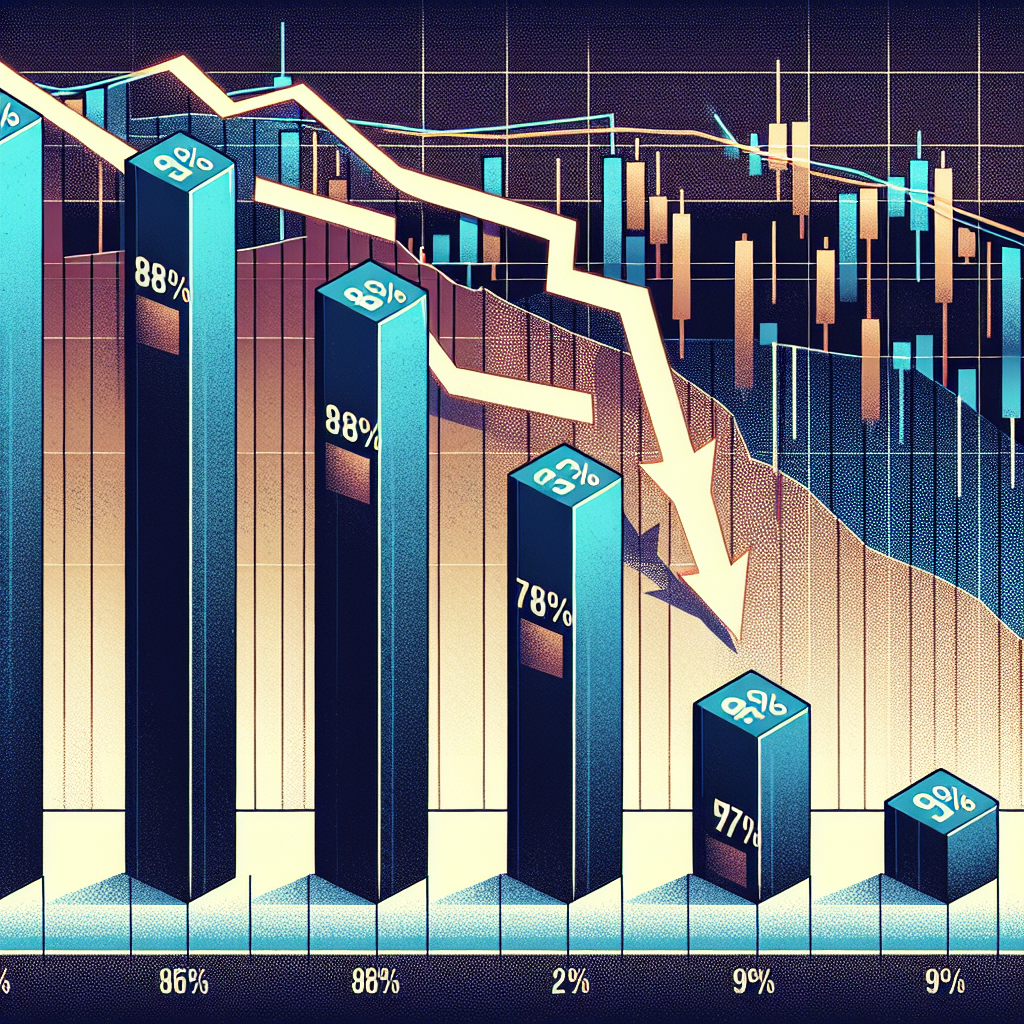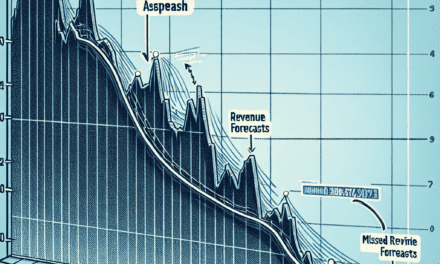“Unlock Potential: Discover Top Growth Stocks with Massive Upside!”
Introduction
In the ever-evolving landscape of the stock market, identifying growth stocks with the potential for significant returns is a key strategy for investors seeking to maximize their portfolios. Despite recent market volatility, certain stocks have shown remarkable resilience and potential for recovery, even after experiencing substantial declines. This introduction highlights three such growth stocks that have caught the attention of savvy investors: one down 84%, another down 28%, and a third down 97%. These stocks, while currently undervalued, present unique opportunities for growth as they navigate challenges and capitalize on emerging trends within their respective industries. By examining their fundamentals, market position, and future prospects, investors can gain insights into why these stocks might be poised for a rebound and long-term success.
Analyzing the Potential of Growth Stocks Down 84%
In the ever-evolving landscape of the stock market, growth stocks have long been a focal point for investors seeking substantial returns. However, the inherent volatility of these stocks often leads to significant price fluctuations, presenting both challenges and opportunities. Among the myriad of growth stocks, some have experienced dramatic declines, with prices plummeting by as much as 84%. Despite these downturns, such stocks may still hold considerable potential for recovery and future growth, making them worthy of closer examination.
To begin with, it is essential to understand the factors contributing to the steep decline in these stocks. Market conditions, such as economic downturns, interest rate hikes, and geopolitical tensions, can heavily impact investor sentiment, leading to sell-offs. Additionally, company-specific issues, such as missed earnings targets, management changes, or increased competition, can further exacerbate the decline. However, these challenges often mask the underlying strengths of the companies, which may include innovative products, strong market positions, or robust growth strategies.
One of the key aspects to consider when analyzing growth stocks that have fallen significantly is the company’s long-term vision and strategic initiatives. Companies that have a clear roadmap for future growth, backed by solid research and development efforts, are more likely to rebound. For instance, a tech company that has invested heavily in cutting-edge technologies, such as artificial intelligence or blockchain, may be well-positioned to capitalize on future market trends. Similarly, a healthcare firm with a promising pipeline of new drugs or therapies could see substantial gains as these products reach the market.
Moreover, it is crucial to assess the financial health of these companies. A strong balance sheet, characterized by low debt levels and ample cash reserves, can provide a buffer during challenging times, allowing the company to weather economic storms and invest in growth opportunities. Additionally, positive cash flow and consistent revenue growth are indicators of a company’s ability to sustain its operations and fund future expansion.
Another important factor to consider is the competitive landscape in which these companies operate. Companies that have a unique value proposition or a competitive edge, such as proprietary technology or a strong brand, are more likely to regain their footing. Furthermore, firms that have demonstrated resilience in the face of adversity, by adapting their business models or diversifying their revenue streams, are often better equipped to navigate market volatility.
While the potential for recovery in growth stocks that have declined by 84% is significant, it is important to approach these investments with caution. Conducting thorough due diligence, including analyzing financial statements, understanding industry trends, and evaluating management’s track record, is essential to making informed investment decisions. Additionally, diversifying one’s portfolio to include a mix of growth and value stocks can help mitigate risk and enhance overall returns.
In conclusion, growth stocks that have experienced substantial declines present both challenges and opportunities for investors. By carefully analyzing the factors contributing to these declines and assessing the long-term potential of the companies, investors can identify stocks with the potential for significant recovery and growth. While the path to recovery may be fraught with uncertainty, the rewards for those who navigate it successfully can be substantial. As always, a balanced approach, grounded in thorough research and prudent risk management, is key to capitalizing on the potential of these growth stocks.
Investment Opportunities in Stocks Down 28%
In the ever-evolving landscape of the stock market, identifying potential growth stocks can be a challenging yet rewarding endeavor. Investors often seek opportunities in stocks that have experienced significant declines, as these may present the potential for substantial returns. In this context, examining stocks that are down 84%, 28%, and 97% can provide valuable insights into potential investment opportunities. Focusing on stocks that have declined by 28%, we can explore the factors contributing to their downturn and assess their potential for recovery and growth.
To begin with, a stock that has experienced a 28% decline may initially appear concerning. However, it is essential to delve deeper into the reasons behind this drop. Often, such declines can be attributed to temporary setbacks, market overreactions, or broader economic conditions rather than fundamental weaknesses in the company itself. For instance, a company might face short-term challenges such as supply chain disruptions, regulatory changes, or shifts in consumer preferences. These issues, while impactful in the short term, may not necessarily undermine the company’s long-term growth prospects.
Moreover, a 28% decline can sometimes result from broader market trends affecting entire sectors. For example, technological advancements or changes in consumer behavior can lead to temporary volatility in certain industries. In such cases, companies that are well-positioned to adapt to these changes may eventually emerge stronger, offering investors an opportunity to capitalize on their recovery. Therefore, it is crucial for investors to conduct thorough research and analysis to distinguish between temporary setbacks and fundamental weaknesses.
Furthermore, evaluating the financial health and strategic initiatives of a company is vital when considering investment in a stock that has declined by 28%. Companies with strong balance sheets, robust cash flows, and a clear vision for future growth are more likely to weather short-term challenges and capitalize on emerging opportunities. Additionally, assessing the management team’s track record and their ability to execute strategic plans can provide valuable insights into the company’s potential for recovery and growth.
In addition to financial metrics, investors should also consider the competitive landscape and market positioning of the company. A company that holds a competitive advantage, such as proprietary technology, a strong brand, or a loyal customer base, is better equipped to navigate challenges and capitalize on growth opportunities. By identifying companies with a solid competitive position, investors can increase their chances of achieving favorable returns.
Moreover, it is important to consider the broader economic environment and industry trends when evaluating stocks that have declined by 28%. Economic indicators, such as interest rates, inflation, and consumer confidence, can significantly impact a company’s performance. Additionally, industry-specific trends, such as technological advancements or regulatory changes, can create both challenges and opportunities for companies. By staying informed about these factors, investors can make more informed decisions and identify stocks with the potential for growth.
In conclusion, while a 28% decline in a stock’s value may initially seem daunting, it can also present a compelling investment opportunity. By conducting thorough research and analysis, investors can identify companies with strong fundamentals, competitive advantages, and strategic initiatives that position them for recovery and growth. By considering the broader economic environment and industry trends, investors can make informed decisions and potentially capitalize on the opportunities presented by stocks that have experienced significant declines.
Understanding the Risks and Rewards of Stocks Down 97%
Investing in growth stocks can be a thrilling yet daunting endeavor, especially when considering stocks that have experienced significant declines. Stocks that are down 84%, 28%, and even 97% present unique opportunities and challenges for investors. Understanding the risks and rewards associated with these stocks is crucial for making informed investment decisions.
To begin with, stocks that have plummeted by such substantial margins often belong to companies that have faced severe operational or market challenges. A stock down 97%, for instance, might indicate a company that has encountered significant financial distress, regulatory issues, or a dramatic shift in its industry landscape. However, these stocks can also represent potential turnaround stories. If a company manages to address its core issues, it could experience a substantial rebound, offering investors significant returns. Therefore, the key lies in discerning whether the decline is a temporary setback or indicative of deeper, insurmountable problems.
Moreover, investing in stocks that have fallen dramatically requires a thorough analysis of the company’s fundamentals. Investors should examine the company’s balance sheet, cash flow, and revenue trends to assess its financial health. Additionally, understanding the competitive landscape and the company’s strategic initiatives is essential. For instance, a company down 97% might be in the process of restructuring its operations or launching new products that could revitalize its growth prospects. Thus, a comprehensive evaluation of these factors can help investors gauge the potential for recovery.
Transitioning to the broader market context, it is important to consider the macroeconomic environment and industry-specific trends that may have contributed to the stock’s decline. Economic downturns, changes in consumer behavior, or technological disruptions can significantly impact a company’s performance. For example, a stock down 84% might belong to a company in an industry undergoing rapid technological change, where traditional business models are being challenged. In such cases, investors need to assess whether the company is adapting effectively to these changes or if it risks becoming obsolete.
Furthermore, the psychological aspect of investing in heavily discounted stocks cannot be overlooked. The fear of further losses can deter investors from taking advantage of potential opportunities. However, history has shown that some of the most successful investments have been made in companies that were once written off by the market. Therefore, maintaining a long-term perspective and focusing on the underlying business fundamentals rather than short-term market fluctuations can be beneficial.
In addition to the potential rewards, it is crucial to acknowledge the inherent risks associated with investing in stocks that have experienced significant declines. These stocks can be highly volatile, and there is always the possibility that the company may not recover, leading to further losses. Consequently, diversification becomes a vital strategy for mitigating risk. By spreading investments across a range of stocks and sectors, investors can reduce the impact of any single stock’s poor performance on their overall portfolio.
In conclusion, while stocks down 84%, 28%, and 97% present intriguing opportunities, they also come with substantial risks. A careful analysis of the company’s fundamentals, industry trends, and macroeconomic factors is essential for making informed investment decisions. By balancing the potential for high returns with the associated risks, investors can navigate the complex landscape of growth stocks and potentially capitalize on undervalued opportunities.
Strategies for Investing in High-Growth Stocks with Significant Declines

Investing in high-growth stocks can be a rewarding yet challenging endeavor, particularly when these stocks have experienced significant declines. The allure of high-growth stocks lies in their potential for substantial returns, driven by innovative business models, disruptive technologies, or expanding market opportunities. However, the volatility associated with these stocks can be daunting, especially when faced with declines as steep as 84%, 28%, and 97%. Understanding the strategies for investing in such stocks is crucial for navigating the complexities of the market and making informed decisions.
Firstly, it is essential to conduct thorough research and due diligence. This involves analyzing the company’s fundamentals, including its financial health, revenue growth, and profit margins. Investors should also consider the competitive landscape and the company’s position within its industry. For instance, a company that has experienced a significant decline might still possess a strong competitive advantage or a unique value proposition that could drive future growth. By examining these factors, investors can assess whether the decline is a temporary setback or indicative of deeper issues.
Moreover, understanding the reasons behind the stock’s decline is vital. Market sentiment can often lead to overreactions, causing stock prices to plummet beyond what is justified by the company’s fundamentals. In such cases, a decline might present a buying opportunity for investors who believe in the company’s long-term potential. Conversely, if the decline is due to structural challenges or a deteriorating business model, it may be prudent to exercise caution. By distinguishing between these scenarios, investors can make more informed decisions about whether to invest in a stock that has experienced a significant decline.
Diversification is another key strategy when investing in high-growth stocks with substantial declines. By spreading investments across a range of stocks, sectors, and industries, investors can mitigate the risks associated with any single investment. This approach allows investors to capitalize on the potential upside of high-growth stocks while minimizing the impact of any individual stock’s poor performance. Additionally, diversification can provide exposure to different growth drivers, such as technological advancements or demographic shifts, which can enhance the overall potential for returns.
Furthermore, adopting a long-term perspective is crucial when investing in high-growth stocks. The volatility inherent in these stocks means that short-term fluctuations are inevitable. However, by focusing on the long-term growth prospects of a company, investors can look beyond temporary market noise and concentrate on the underlying value of their investments. This approach requires patience and discipline, as well as a willingness to withstand periods of market turbulence.
Finally, it is important to remain adaptable and open to new information. The investment landscape is constantly evolving, and staying informed about market trends, economic indicators, and company developments is essential. By continuously reassessing their investment thesis and being willing to adjust their strategies as needed, investors can better navigate the challenges and opportunities presented by high-growth stocks with significant declines.
In conclusion, investing in high-growth stocks that have experienced substantial declines requires a combination of thorough research, diversification, a long-term perspective, and adaptability. By employing these strategies, investors can better position themselves to capitalize on the potential rewards while managing the inherent risks. As with any investment, careful consideration and informed decision-making are key to achieving success in this dynamic and often unpredictable market segment.
Market Trends: Why Some Growth Stocks Are Down 84%
In the ever-evolving landscape of the stock market, growth stocks have long been a focal point for investors seeking substantial returns. However, the volatile nature of these stocks means that they can experience significant fluctuations, sometimes plummeting to unexpected lows. Recently, several growth stocks have caught the attention of market analysts due to their dramatic declines, with some down by as much as 84%, 28%, and even 97%. Understanding the reasons behind these downturns is crucial for investors looking to navigate the complexities of the market and identify potential opportunities for future gains.
To begin with, the stock market is inherently cyclical, and growth stocks are particularly susceptible to these cycles. The recent downturn in some growth stocks can be attributed to a combination of macroeconomic factors, including rising interest rates and inflationary pressures. As central banks around the world tighten monetary policy to combat inflation, the cost of borrowing increases, which can negatively impact companies that rely heavily on debt to finance their growth. This, in turn, can lead to a decrease in investor confidence, causing stock prices to fall.
Moreover, the global economic environment has been fraught with uncertainty, exacerbated by geopolitical tensions and supply chain disruptions. These factors have contributed to a challenging business climate, particularly for companies in sectors such as technology and consumer discretionary, which are often classified as growth stocks. As these companies face headwinds in maintaining their growth trajectories, investors may become wary, leading to a sell-off and subsequent decline in stock prices.
In addition to external economic factors, company-specific issues can also play a significant role in the decline of growth stocks. For instance, a company may experience setbacks in product development, regulatory challenges, or management changes that can erode investor confidence. When a company’s growth prospects are called into question, its stock price can suffer as a result. This is particularly true for companies that have been trading at high valuations based on future growth expectations. When these expectations are not met, the market can react swiftly and harshly.
Despite these challenges, it is important to recognize that a decline in stock price does not necessarily indicate a permanent downturn. In fact, for astute investors, these periods of decline can present attractive buying opportunities. When evaluating growth stocks that have experienced significant declines, it is essential to conduct thorough research and analysis to determine whether the underlying fundamentals of the company remain strong. Factors such as a robust business model, competitive advantages, and a capable management team can indicate the potential for a stock to rebound and deliver long-term value.
Furthermore, diversification remains a key strategy for mitigating risk in a volatile market. By spreading investments across a range of growth stocks, investors can reduce their exposure to any single company’s downturn while still participating in the potential upside of the sector as a whole. It is also advisable to maintain a long-term perspective, as market fluctuations are inevitable, and patience can often be rewarded with substantial returns over time.
In conclusion, while some growth stocks have experienced significant declines of 84%, 28%, and 97%, these downturns can be attributed to a combination of macroeconomic factors, industry-specific challenges, and company-specific issues. However, for investors willing to conduct diligent research and maintain a diversified portfolio, these periods of decline can offer compelling opportunities for future growth. As always, a careful and informed approach is essential when navigating the complexities of the stock market.
Evaluating the Long-Term Prospects of Stocks Down 28%
In the ever-evolving landscape of the stock market, investors are constantly on the lookout for opportunities that promise substantial returns over the long term. Among the myriad of options available, growth stocks often stand out due to their potential for significant appreciation. However, the journey of growth stocks is not always linear, and they can experience substantial declines, sometimes as much as 84%, 28%, or even 97%. Despite these downturns, evaluating the long-term prospects of such stocks can reveal promising opportunities for patient investors.
To begin with, it is essential to understand that a decline in a stock’s price does not necessarily indicate a fundamental flaw in the underlying business. Market volatility, macroeconomic factors, and sector-specific challenges can all contribute to temporary setbacks. For instance, a stock that is down 28% might be experiencing short-term headwinds, but this does not preclude the possibility of a robust recovery. Therefore, investors should focus on the company’s fundamentals, such as revenue growth, profit margins, and competitive positioning, to assess its long-term potential.
Moreover, the technology sector often exemplifies this dynamic, where companies can experience sharp declines due to rapid changes in innovation and consumer preferences. A tech stock down 28% might be facing increased competition or a temporary slowdown in demand. However, if the company has a strong track record of innovation and a solid pipeline of new products or services, it may still offer compelling growth prospects. Investors should consider whether the company is investing in research and development and whether it has the agility to adapt to changing market conditions.
In addition to technology, the healthcare sector also presents opportunities for growth stocks that have experienced significant declines. Biotech firms, for example, often face volatile stock prices due to the high-risk nature of drug development and regulatory approvals. A biotech stock down 28% might have encountered setbacks in clinical trials or regulatory hurdles. Nevertheless, if the company has a diverse portfolio of promising drug candidates and a strong management team, it could still achieve substantial growth in the long run. Investors should evaluate the company’s pipeline, partnerships, and financial health to gauge its potential for recovery.
Furthermore, it is crucial to consider the broader economic environment when evaluating growth stocks. Interest rates, inflation, and geopolitical events can all impact investor sentiment and stock prices. A stock down 28% might be affected by macroeconomic factors beyond its control. However, if the company operates in a sector with strong secular growth trends, such as renewable energy or digital transformation, it may be well-positioned to capitalize on long-term opportunities. Investors should assess whether the company is aligned with these trends and whether it has the resources to navigate economic challenges.
In conclusion, while a decline of 28% in a growth stock’s price can be concerning, it is important to look beyond the immediate downturn and evaluate the company’s long-term prospects. By focusing on fundamentals, sector dynamics, and macroeconomic factors, investors can identify stocks with the potential for substantial recovery and growth. Patience and thorough analysis are key to uncovering opportunities in stocks that have experienced significant declines, ultimately leading to rewarding investment outcomes.
Recovery Potential: Can Stocks Down 97% Bounce Back?
In the ever-evolving landscape of the stock market, investors are constantly on the lookout for opportunities that promise substantial returns. Among these opportunities, growth stocks often stand out due to their potential for significant appreciation. However, the journey of growth stocks is not always linear, and they can experience dramatic declines. This brings us to the intriguing question: can stocks that have plummeted by as much as 97% truly bounce back?
To explore this, it is essential to understand the nature of growth stocks. These stocks typically belong to companies that are expected to grow at an above-average rate compared to other firms in the market. They often reinvest their earnings into the business to fuel expansion, which can lead to substantial gains for investors. However, this aggressive growth strategy can also make them vulnerable to market volatility and economic downturns.
When a growth stock experiences a significant decline, such as a drop of 97%, it is often due to a combination of factors. These may include poor financial performance, changes in industry dynamics, or broader economic challenges. For instance, a company might face increased competition, regulatory hurdles, or shifts in consumer preferences that impact its revenue and profitability. Additionally, macroeconomic factors such as interest rate hikes or geopolitical tensions can exacerbate these challenges, leading to a steep decline in stock prices.
Despite these setbacks, the potential for recovery remains. Historically, some growth stocks have managed to rebound from severe declines, driven by strategic pivots, innovation, or favorable market conditions. For example, a company might introduce a groundbreaking product, enter new markets, or streamline operations to improve efficiency and profitability. These actions can restore investor confidence and drive the stock price upward.
Moreover, the broader market environment plays a crucial role in the recovery potential of these stocks. During periods of economic recovery or bull markets, investor sentiment often shifts towards riskier assets, including growth stocks. This renewed interest can lead to increased demand and higher valuations, providing a tailwind for stocks that have previously suffered significant losses.
However, it is important to approach these opportunities with caution. Not all stocks that have declined sharply will recover, and some may continue to face insurmountable challenges. Therefore, thorough research and analysis are imperative. Investors should assess the company’s fundamentals, including its financial health, competitive position, and growth prospects. Additionally, understanding the industry landscape and potential catalysts for recovery can provide valuable insights.
In conclusion, while stocks that have fallen by as much as 97% present a high-risk, high-reward scenario, they also offer the potential for substantial gains if the underlying company can successfully navigate its challenges. By carefully evaluating the factors that contributed to the decline and identifying signs of a potential turnaround, investors can make informed decisions about whether to include these stocks in their portfolios. Ultimately, the key lies in balancing the allure of recovery potential with the inherent risks, ensuring that investment decisions align with one’s financial goals and risk tolerance.
Q&A
1. **Question:** What is a top growth stock that is down 84%?
**Answer:** A top growth stock that is down 84% could be a company like Peloton, which experienced significant declines after initial pandemic-driven growth.
2. **Question:** What factors might contribute to a growth stock being down 28%?
**Answer:** Factors could include market volatility, changes in consumer demand, increased competition, or disappointing earnings reports.
3. **Question:** Can a stock down 97% still be considered a growth stock?
**Answer:** Yes, if the company has strong fundamentals, potential for recovery, and a solid business model, it can still be considered a growth stock despite a significant drop.
4. **Question:** What are the risks of investing in a stock that is down 84%?
**Answer:** Risks include potential bankruptcy, continued poor performance, market saturation, or failure to adapt to industry changes.
5. **Question:** What potential does a stock down 28% have for recovery?
**Answer:** Potential for recovery could be driven by strategic pivots, new product launches, market expansion, or improved financial performance.
6. **Question:** Why might investors consider a stock that has fallen 97%?
**Answer:** Investors might consider it if they believe the stock is undervalued, has turnaround potential, or if there are signs of operational improvements.
7. **Question:** What should investors look for in a growth stock that has significantly declined?
**Answer:** Investors should look for strong leadership, a clear path to profitability, innovative products or services, and a robust market opportunity.
Conclusion
Investing in growth stocks that have experienced significant declines, such as those down 84%, 28%, and 97%, can present both opportunities and risks. These stocks may offer substantial upside potential if they recover, driven by strong fundamentals, innovative products, or market expansion. However, the steep declines also indicate potential underlying issues, such as market volatility, competitive pressures, or operational challenges. Investors should conduct thorough research, considering factors like the company’s financial health, industry trends, and management effectiveness, to assess whether these stocks align with their risk tolerance and investment strategy. Diversification and a long-term perspective can also help mitigate risks associated with investing in such volatile assets.





